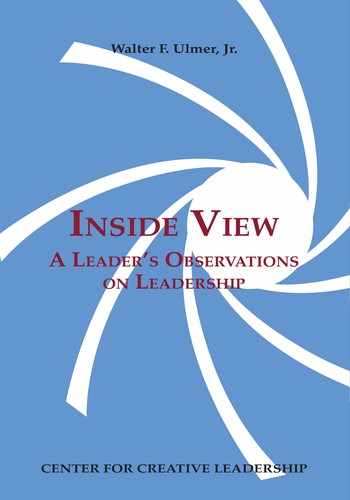THE NEED TO BUILD, AS WELL AS OPERATE, ORGANIZATIONS
One of the few real differences between Japanese and American executives is the immediacy with which the latter demand measurable results. Americans are indeed guilty of focusing on the short term. And there may be more to it than Wall Street’s appetite for quarterly returns. The drive and impatience of the typical American executive may be as much a reflection of inadequate concepts of leadership theory as of any inherent personality traits.
I think we have a significant flaw in much of the recent literature and training on leadership. That flaw is the failure to distinguish between two fundamental dimensions of organizational leadership: “operating” and “building.” In the former, the leader is concerned with making the organization as efficient and immediately productive as it can be; in the latter, the leader is concerned with the continuing capacity of the organization to be efficient and productive.
Even within the military—whose overall leadership effectiveness is in my view second to none—there is a frequent reliance on “operating” techniques (for instance, heavy control—something well suited to combat environments where prompt response is crucial) in situations where “building” techniques are most appropriate (for instance, in deciding how best to use a new simulation).
Some of this misapplication of technique derives from leadership training that has inadvertently neglected long-term issues. The measurable short term has achieved its preeminence somewhat by default. For instance, consider leadership as it is put into the basic Ohio State formula, where “mission” and “people” are the two variables. How is the long term introduced into this convenient formula? What if there were a third variable of almost equal weight. This third variable could be called “context” or “purpose” (or maybe something more striking that does not immediately come to mind!). In any case, this third variable would have two major subdivisions: “building” and “operating.” Given this expanded paradigm of basic leadership, we might be less likely to take those actions that produce only profits for the next quarter instead of those less immediately spectacular measures that could lead to an improved next decade.
It is true that we have recognized for many years that leaders must consider the situation or context, the resources available, and the mission at hand before selecting a particular modus operandi. We have recognized also that certain leader behaviors are appropriate regardless of the situation—such as actions that generate perceptions of competence, fairness, predictability, and integrity. But for some reason the simple idea of distinguishing between the institutional development, or sustainment, mode (“building”) and the conduct of business, or tactical, mode (“operating”) when discussing optimum leadership and managerial techniques has not been popular. Granted, an intermixing of these techniques always pertains. Still, an awareness of the conspicuous difference in their impact could lead to ameliorating many of the frustrations that commonly plague both leader and follower.
It is ironic that the striking increase in leadership training that we have witnessed in recent years may have contributed to a serious leadership problem because the primary focus has been de facto on the short term.
In any event, distinguishing between “building” and “operating” would not substitute for theories of transformational leadership or situational leadership. But it would augment such constructions. Perhaps this distinction, when added to the formula for leadership action in the minds of American executives, will bring us a step closer to gaining the long-term productivity that our society so badly needs.
As a final word, I should say that I am not claiming to have invented this distinction between short- and long-term techniques. Like most leadership ideas it has been around for a long time. For instance, many of the “new principles” of leadership have been in military textbooks for decades, both here and abroad. There are wonderful discussions of empowerment, of struggles with ambiguity, of the sometimes fatal consequences of lack of self-awareness, and of the need for continuing development and growth in a book entitled The Power of Personality in War by Major General Freytag-Loringhoven, published in 1905. And of course Nelson’s preparations of shared vision and mutual trust and confidence among his captains before his victory at Trafalgar in 1805 met every aspect of contemporary guidance to CEOs of the 1990s. Perhaps the development of good leaders has less to do with what we don’t know than with what we have forgotten!
[Originally published in Issues & Observations, Vol. 13, No. 3, 1993]
